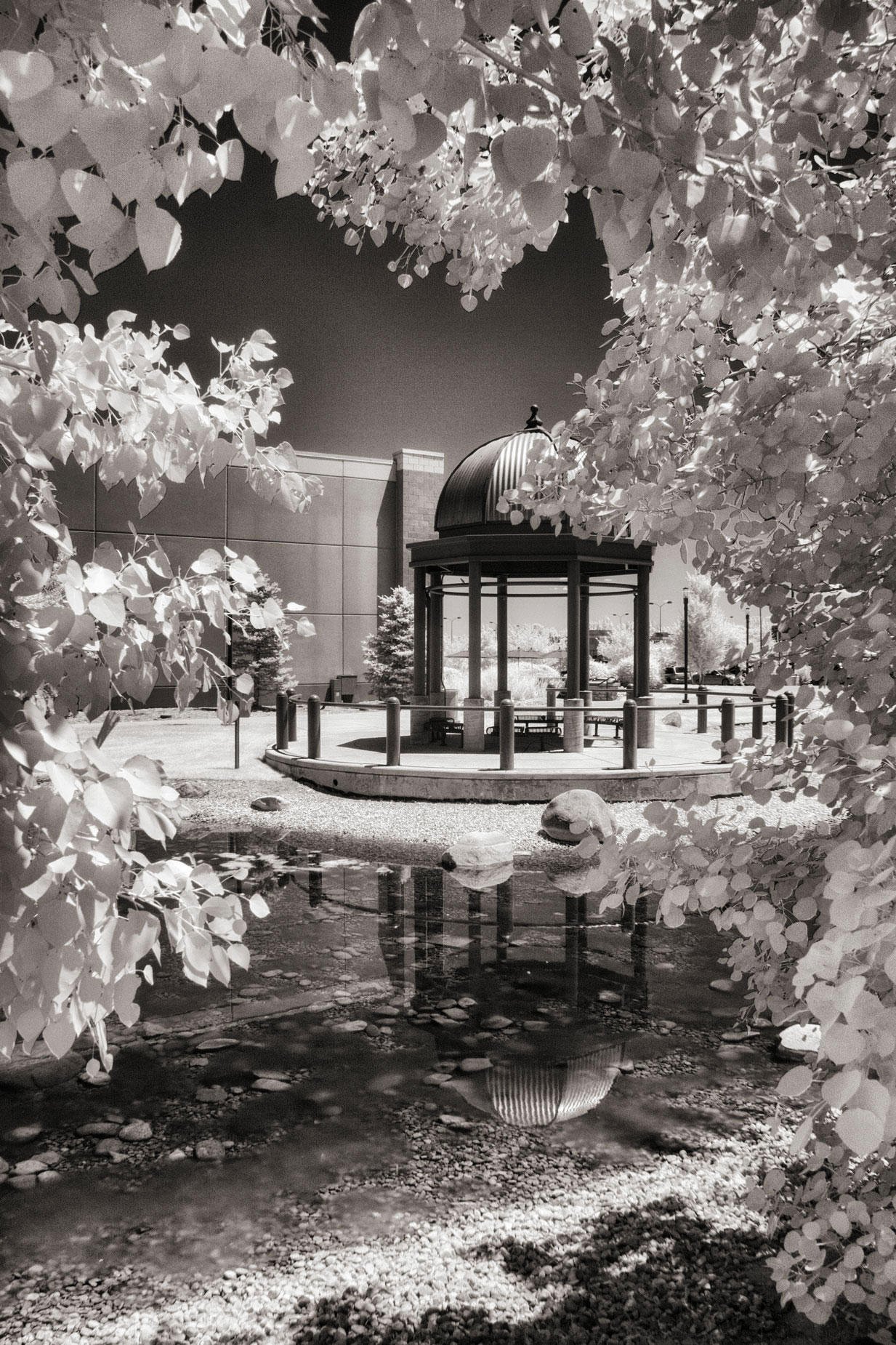Today’s Post by Joe Farace
Eschew the ordinary, disdain the commonplace—Chuck Jones. Yes that Chuck Jones who also said “Bugs is who we want to be. Daffy is who we are.:
Lest you think digital infrared capture is an esoteric photographic pursuit, a recent Google search turned up 123,000,000 hits for the words “digital infrared.” By comparison “Gum Bichromate” produced only 263,000 hits; now that’s a bit more esoteric.
 The simplest reason for shooting digital infrared photographs is that this technique has the power to transform mundane visual experiences into something that might just be unforgettable. Everyday scenes you might walk right by and never think of photographing, take on a dreamy look when seen in infrared.
The simplest reason for shooting digital infrared photographs is that this technique has the power to transform mundane visual experiences into something that might just be unforgettable. Everyday scenes you might walk right by and never think of photographing, take on a dreamy look when seen in infrared.
Nevertheless, digital IR photography is not for everyone. I have to assume that dark skies, snow-white foliage and increased contrast appeal to your aesthetic sensibilities and what the heck, it’s fun.
Digital IR photography has many advantages over shooting infrared film. Back in the old days of IR film, you needed to use special film and load and unload it in total darkness. When combined with shooting through almost opaque filters and using an Exposure Index that could best be described as “what the heck,” it was a challenge.
Many images captured with IR film can be grainy while digital infrared image may or may not be depending on the ISO setting that you’ve selected. If you find digital noise or film grain, for that matter, objectionable, you can get some tips on how to control it in my post “Tips for Dealing with Digital Noise in Your Photographs.”
How I Made this Shot: I photographed this interesting area near Arvada, Colorado using a Canon EOS Digital Rebel XT that had been converted for infrared capture by Life Pixel using their Enhanced Color Infrared filer (665nm) and an EF18-55mm f/3.5-5.6 IS lens. Exposure was 1/320 sec at f/11 and ISO 400. The RAW file was opened in Adobe Camera RAW and slightly tweaked with it before being processed in Silver Efex and then Platinum toned in PhotoKit 2.
Digital infrared capture lets you immediately check the exposure after capture and make any necessary changes in your camera settings using either the Manual controls or the exposure compensation control. One of the biggest advantages of using mirrorless cameras is that you can make that adjustment just by looking at the EVF before snapping the shutter.
Exposure for IR film, on the other hand, is mostly experience and guesswork. To work with IR film you needed special—they can be expensive—filters. You can check out my YouTube video on the subject here. That part of infrared capture hasn’t changed but you’ll either have to process the film yourself or find an ever-dwindling pool of specialty labs to do it for you. With digital IR you can make prints at Wal-Mart directly from your memory card.
